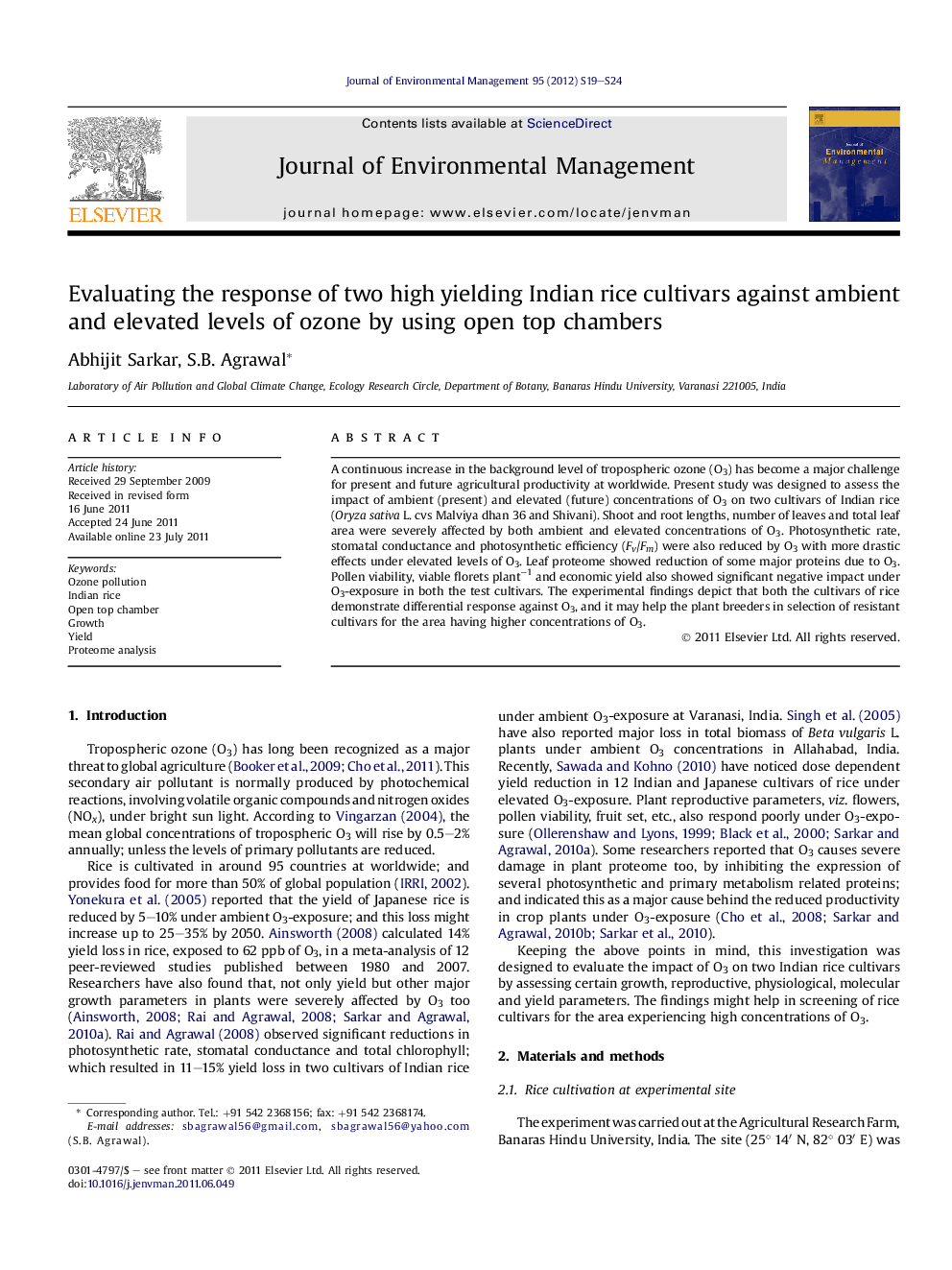| کد مقاله | کد نشریه | سال انتشار | مقاله انگلیسی | نسخه تمام متن |
|---|---|---|---|---|
| 1057021 | 947058 | 2012 | 6 صفحه PDF | دانلود رایگان |

A continuous increase in the background level of tropospheric ozone (O3) has become a major challenge for present and future agricultural productivity at worldwide. Present study was designed to assess the impact of ambient (present) and elevated (future) concentrations of O3 on two cultivars of Indian rice (Oryza sativa L. cvs Malviya dhan 36 and Shivani). Shoot and root lengths, number of leaves and total leaf area were severely affected by both ambient and elevated concentrations of O3. Photosynthetic rate, stomatal conductance and photosynthetic efficiency (Fv/Fm) were also reduced by O3 with more drastic effects under elevated levels of O3. Leaf proteome showed reduction of some major proteins due to O3. Pollen viability, viable florets plant−1 and economic yield also showed significant negative impact under O3-exposure in both the test cultivars. The experimental findings depict that both the cultivars of rice demonstrate differential response against O3, and it may help the plant breeders in selection of resistant cultivars for the area having higher concentrations of O3.
► The responses of two Indian rice cultivars were assessed under elevated O3-stress.
► The study was performed under near natural condition using open top chambers (OTCs).
► Most of the growth parameters were found to be reduced under elevated O3-stress.
► Pollen viability and grain yield were also reduced under O3-stress.
► O3 also affected some important photosynthetic proteins in rice plants.
Journal: Journal of Environmental Management - Volume 95, Supplement, March 2012, Pages S19–S24